Use Lines to Draw a Circle
So far, we've only been generating drawings with straight lined shapes. This lesson volition cover how we can use turtle to draw curves and circles. We'll start by drawing some arcs, and then build up to the bespeak where we can draw a full, 360° circle.
Drawing Arcs #
Central Concept: We tin draw a line that appears to be curved past drawing a lot of much shorter lines and rotating merely a trivial bit between each one.
To demonstrate this, let's wait at a programme that draws the following 90° arc. This arc covers 1 quarter of 360°, and so this is often called a "quarter arc".
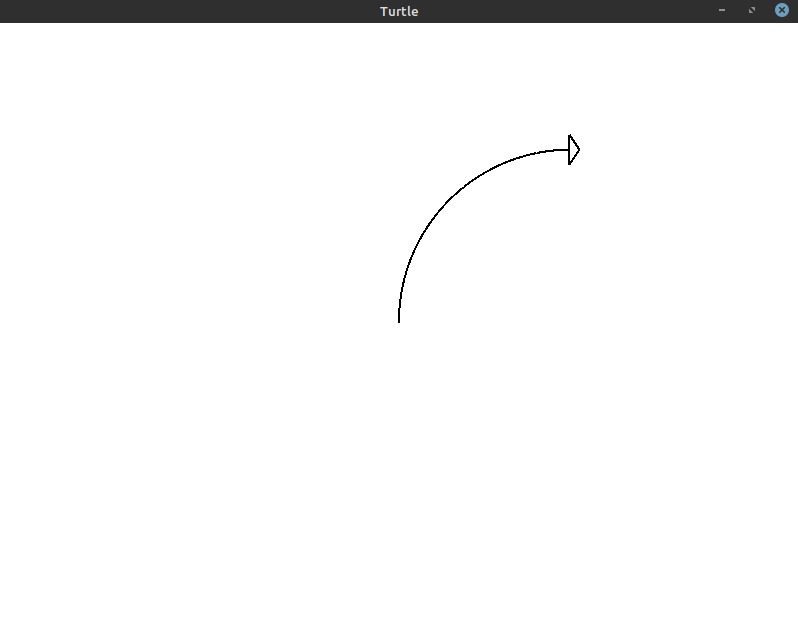
To figure out how to draw this quarter arc, permit's look at the differences betwixt the starting time position of the turtle (shown beneath) and the image we're trying to create above.
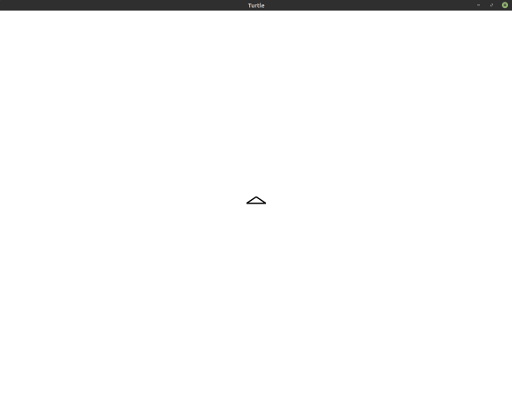
Observe that the turtle appears to get from facing the top of the window to facing the right. It has moved forth a quarter of a circle to get there. The program to generate this arc is as follows:
1 2 3 4 5 6 7 eight 9 10
apply turtle :: Turtle ; fn main () { let mut turtle = Turtle :: new (); for _ in 0 .. ninety { turtle .frontward ( 3.0 ); turtle .right ( 1.0 ); } }
As you tin meet, we're doing exactly what we said we would do earlier: nosotros're drawing many very small lines and slightly adjusting our bending in every iteration. We instruct the turtle to motion 3 steps forward and turn 1° to the right every fourth dimension.
To confirm that this is actually working as described, permit'south try decreasing the number of iterations and increasing the size of the lines we're drawing. To draw longer lines, nosotros'll have more steps. We'll besides increase the amount we're turning so that nosotros still accomplish ninety° by the time we're washed iterating.
Here'south the drawing that gets created with 3 iterations of the turtle drawing a line for 90 steps and turning 30° afterwards each line.
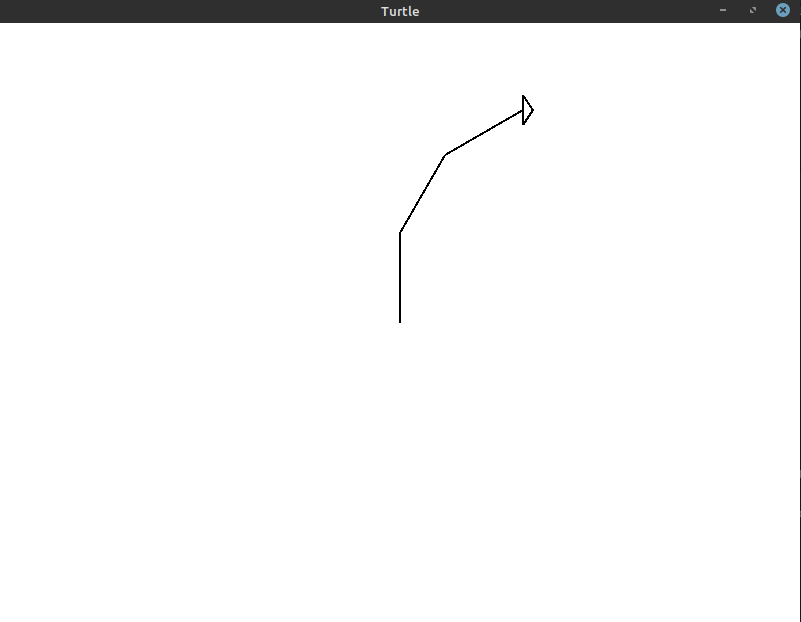
This is the code that generates this image:
1 2 3 4 5 6 7 viii 9 10 11
use turtle :: Turtle ; fn main () { let mut turtle = Turtle :: new (); // 30 degrees * iii = 90 degrees for _ in 0 .. 3 { turtle .forward ( 90.0 ); turtle .correct ( xxx.0 ); } }
You can see that we're notwithstanding turning the turtle xc° in total, but the curve doesn't exactly follow the same round arc we were getting before. To improve this, allow's try 5 iterations with an xviii° turn every time:
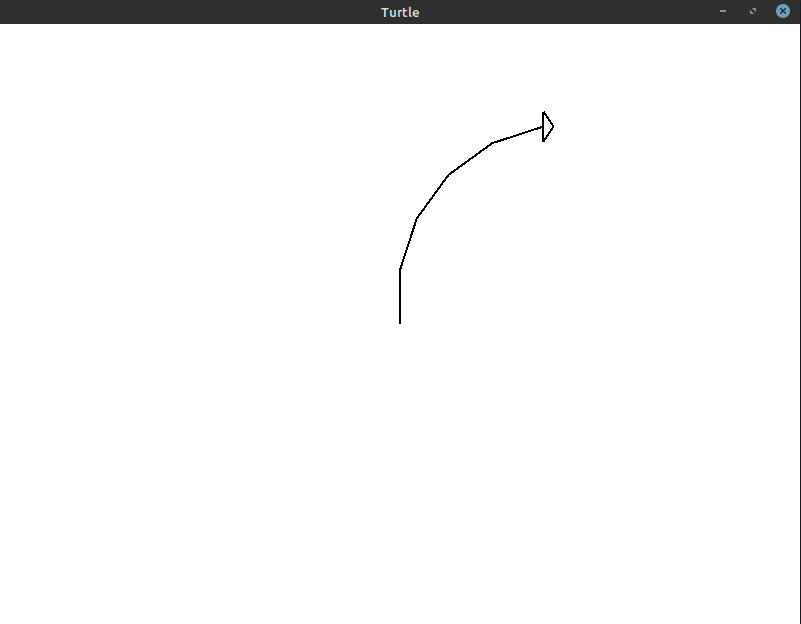
Here'south the code that generates that paradigm:
i two three 4 v half-dozen vii 8 9 10 11
use turtle :: Turtle ; fn principal () { let mut turtle = Turtle :: new (); // 18 degrees * v = ninety degrees for _ in 0 .. 5 { turtle .forward ( 54.0 ); turtle .right ( 18.0 ); } }
This gets us a fiddling closer! If we increment it to 9 iterations with a ten° turn, we get the following prototype:
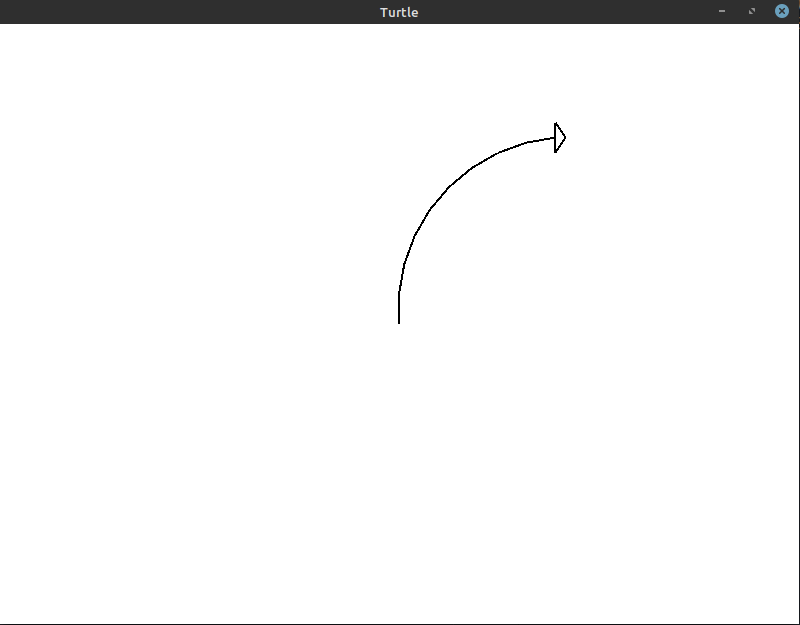
The code for this image:
1 2 iii four v vi 7 8 9 10 11
use turtle :: Turtle ; fn main () { permit mut turtle = Turtle :: new (); // 10 degrees * 9 = xc degrees for _ in 0 .. 9 { turtle .forward ( xxx.0 ); turtle .right ( x.0 ); } }
At this point, it's nigh indistinguishable. Yet, if yous wait shut enough, you can withal tell that there are 9 private lines being drawn here. We can make the curve even smoother using eighteen iterations with a 5° turn every time:
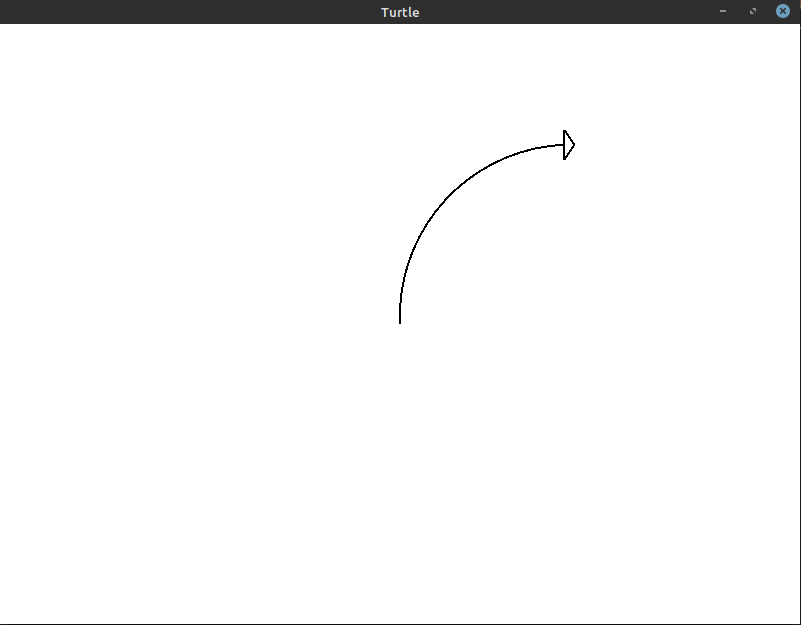
The code for this paradigm:
ane 2 3 4 5 6 7 8 9 10 xi
use turtle :: Turtle ; fn main () { let mut turtle = Turtle :: new (); // five degrees * xviii = ninety degrees for _ in 0 .. 18 { turtle .forrard ( 15.0 ); turtle .right ( 5.0 ); } }
With this many iterations, we become pretty close. But to illustrate how much of a deviation each increase in iterations makes, hither's a GIF that shows united states of america getting closer and closer to the final quarter arc:
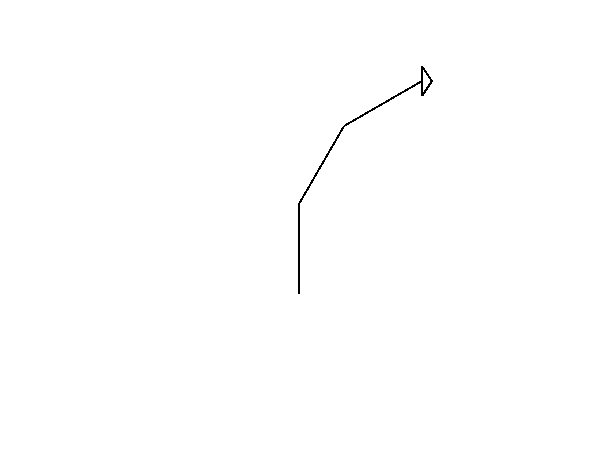
The number of iterations you lot need for your own drawings will depend on the size of the arc y'all are creating. To exist safe, you can draw the nigh reliable and authentic arc: xc iterations with a 1° turn every time:
1 2 3 4 5 6 7 eight 9 10
utilize turtle :: Turtle ; fn master () { let mut turtle = Turtle :: new (); for _ in 0 .. 90 { turtle .forward ( 3.0 ); turtle .right ( one.0 ); } }
This is the aforementioned program from above that gets us the xc° arc we initially prepare out to create.

Drawing Circles #
Now that nosotros've figured out how to draw a xc° arc, all we take to do to become a circumvolve is describe 4 of them (ninety° * 4 = 360°). Here'south a program you could utilise to do that:
1 ii 3 iv v six 7 8 nine 10 11 12 thirteen
use turtle :: Turtle ; fn main () { let mut turtle = Turtle :: new (); // Try to avoid programs that look similar this for _ in 0 .. four { for _ in 0 .. 90 { turtle .forrad ( iii.0 ); turtle .right ( one.0 ); } } }
This is probably non the program you want to write! While this programme will piece of work, allow's run across what we can practice if we think through the problem given what we've learned already.
We know that nosotros desire to describe a total circle. A total circumvolve has 360° in it. We know that if we rotate the turtle ane° for xc iterations, we'll draw a quarter arc. Extending that thought, nosotros should attempt to write a program that performs 360 iterations, rotating the turtle 1° every time.
That's how nosotros go to the program below:
1 two 3 4 5 half dozen 7 8 9 10 11 12
utilize turtle :: Turtle ; fn main () { let mut turtle = Turtle :: new (); for _ in 0 .. 360 { // Move forward three steps turtle .forward ( 3.0 ); // Rotate to the right (clockwise) past 1 caste turtle .correct ( ane.0 ); } }
This produces the consummate circle shown below:

Exercises #
These exercises are designed to help you reinforce what you've learned throughout this lesson. All exercises are completely optional. If you get stuck on an practise, it is totally okay to move on and come back to it later.
If y'all need help, run across the Getting Help section of the guide.
gillisonnevency99.blogspot.com
Source: https://turtle.rs/guide/example-circle/